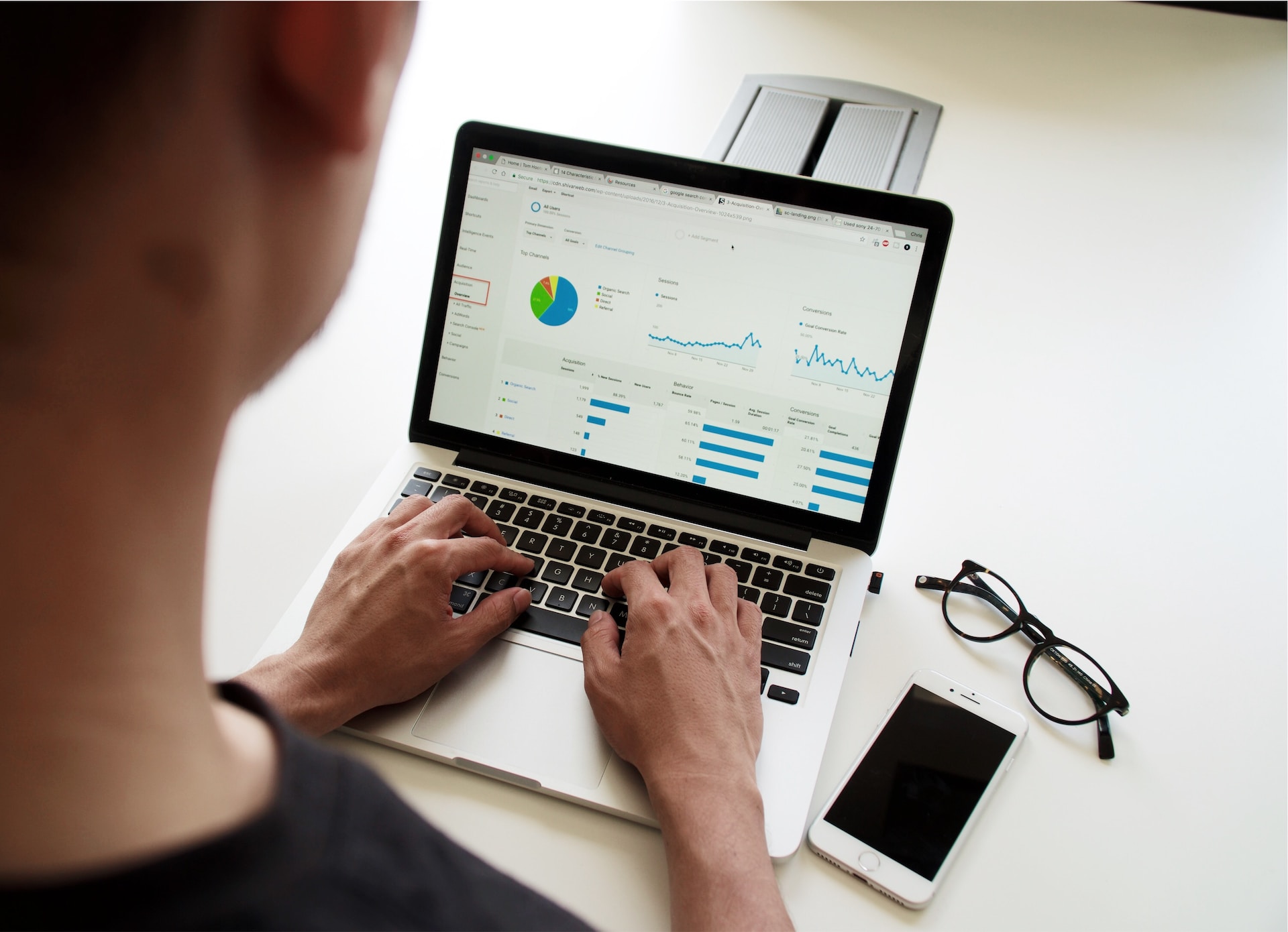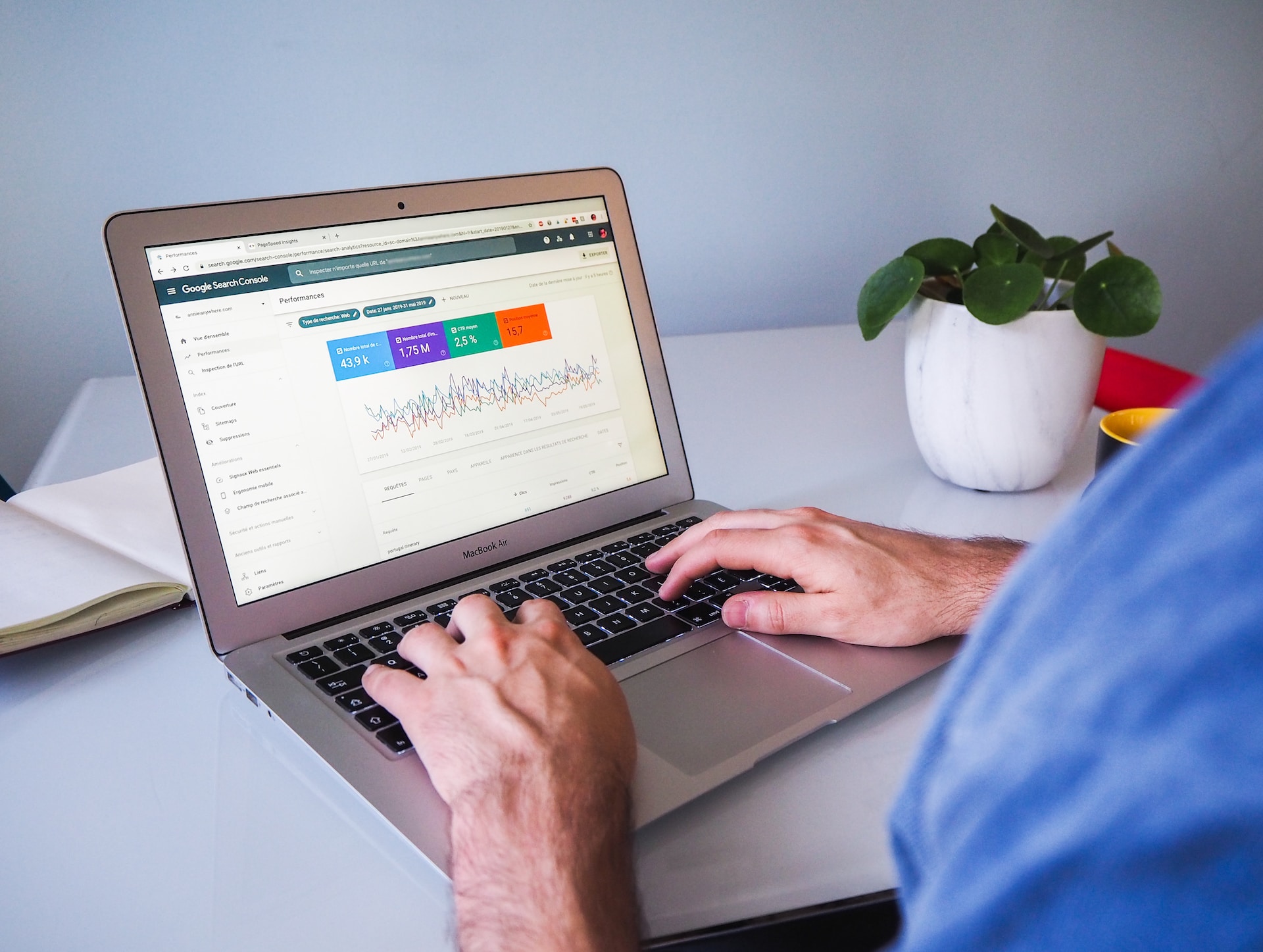According to a study by Ghostery, 77 percent of all page loads contain at least one tracker. Moreover, most websites use web tracking for statistical analysis or advertising.
Today, Google is—unsurprisingly—the world’s most prominent and largest data-collecting company. From a study of over 144+ million page load samples, the California-based web giant tracked almost 64 percent of the web pages. Safe to say, web tracking is a crucial aspect of online marketing and retail. So if you want to understand why tracking user behavior could benefit your business, read on.
What is web tracking?
Web tracking has become essential in marketing strategies, especially for online businesses. By collecting data on website visitors‘ behavior, companies can gain valuable insights into customer preferences and effectively engage with potential customers.
There are several web tracking methods. The most commonly used methods are cookies, web beacons, and JavaScript tracking.
Cookies:
Cookies are small text files stored on a user’s device containing information about their website activity. Cookies help a website save login information and preferences, etc.
Web beacons:
Web beacons, or pixel tracking, refer to invisible images embedded in web pages or emails to track user behavior. When a user opens an email or a web page, this image gets loaded on the server. Web beacons track user behavior, such as clicks and page views.
JavaScript tracking:
JavaScript tracking involves adding a tracking code to a website’s HTML code to collect user behavior data.
What is tracking data?
Companies track various data types to understand user actions and behavior on their websites. Basic tracking data includes metrics such as:
- Pageviews
- Time spent on the website
- Bounce rate
- Traffic sources
Advanced tracking data includes:
- Visitor behavior
- Preferences
- Demographic information
Companies pay attention to this information to personalize user experiences and improve conversion rates.
What do data privacy regulatory bodies do?
Data privacy regulations, such as the General Data Protection Regulation (GDPR) in the EU and the California Consumer Privacy Act (CCPA) in the US, aim to protect online user privacy and require businesses to obtain user consent before collecting personal data. Adhering to these regulations and ensuring data security and anonymity is crucial.
Several web tracking tools are available nowadays, including Google Analytics, Adobe Analytics, and Piwik/Matomo.
These platforms help businesses collect and analyze website data to gain insights into user behavior.
Photo by Tim van der Kuip on Unsplash
What are some of the best web-tracking practices?
Businesses should do their best to follow certain principles when tracking users browsing their websites to cultivate trust and loyalty.
Consent and transparency:
Businesses should be transparent about web tracking. Apart from notifying users their data will be tracked, they should also give these users an opt-out option if they are uncomfortable sharing this information.
Privacy and user anonymity:
Businesses should do everything possible to safeguard user privacy and anonymity. Online firms should avoid collecting sensitive data such as health or financial information. They should also only use the information they collect for legal and legitimate professional purposes.
Learn more about “Understanding website tracking: a complete guide.”
How can marketing automation supercharge a website?
Seventy-eight percent of marketers strongly believe that marketing automation has increased revenue. And it’s unsurprising: businesses implementing marketing automation have experienced an 80 percent rise in leads. What’s clear, then, is that marketing automation helps businesses in optimizing and automating their marketing processes, resulting in enhanced efficiency.
Conversely, website visitor tracking empowers companies to gather valuable data, enabling them to assess visitor interactions and website engagement.
When combined, website tracking and marketing automation has the potential to be powerful tools that can yield significant business results. Marketing automation streamlines and automates marketing processes, while website visitor tracking provides invaluable data on visitor interactions.
By leveraging both these technologies, businesses can optimize their marketing strategies. Here are four ways marketing automation can supercharge web tracking efforts, improving business outcomes.
Personalized content delivery:
- Marketing automation allows marketers to track website visitor interactions and behavior.
- Through this, marketers can analyze this data to understand visitors’ preferences and use this information to create personalized content.
- Subsequently, marketers can send tailored content, such as targeted emails, special discounts/offers, or personalized videos, to their website users. Doing so can help boost engagement, build trust, and improve conversions.
Automated email campaigns:
- Marketers can automate email campaigns triggered by specific actions or visitor behavior.
- Examples include a ‘welcome’ email series for newsletter sign-ups and targeted emails for abandoned carts.
- Consequently, businesses can nurture potential customers through the sales funnel by leveraging web tracking data.
Improve customer experience
- Tracking user behavior and website activity helps identify opportunities to enhance customer experience.
- Marketing automation enables sending ads, targeted follow–up emails, or incentives to reengage prospects.
- Tailoring marketing efforts to meet specific requirements improves customer experience, builds reputation, and fosters loyalty.
Real-time alerts and notifications
- Real–time alerts and notifications based on web tracking data allow prompt responses to visitor actions.
- Set up alerts for high-value customers, hot leads, or other relevant triggers.
- Engaging with visitors at the peak of their potential purchasing interest increases conversion opportunities and enhances lead nurturing.
Optimize marketing campaigns
- Marketing automation helps optimize campaigns by providing invaluable user behavior and preferences insights.
- Tracking user behavior on a website can also offer insights into what might be the most resonating marketing channels and messages for your target audience.
- Website tracking data helps identify the most effective channels for converting visitors into customers, such as emails, social media, and PPC (pay-per-click) ads.
- By analyzing webwebs tracking data, you can also evaluate the effectiveness of your marketing channels and improve their performance.
- Leveraging these insights helps maximize ROI and boost the overall success of your marketing campaigns.
Learn more about “8 Ways marketing automation can supercharge your website tracking.“
Photo by Mimi Thian on Unsplash
What is browser fingerprinting?
In 2021, the digital advertising spend was $522.5 billion. By 2026, this figure will soon raise up to $836 billion. As digital advertising becomes increasingly popular, companies have responded by using web tracking to gather information about their website visitors. As a result, browser fingerprinting has emerged as a popular technique among the various data collection methods.
Browser fingerprinting is a unique method of collecting and analyzing data from a web browser to create a distinctive identifier or ‘fingerprint.’ These data points include installed plugins, operating systems, browser versions, screen resolutions, and language preferences.
Websites and advertisers then combine multiple data points to track and identify users across different devices and browsing sessions, primarily for online tracking and identification purposes.
The significance of browser fingerprinting lies in its ability to identify and track individual users uniquely. Unlike traditional tracking methods such as cookies, which can be quickly deleted or blocked, browser fingerprinting relies on a combination of diverse data points that are difficult to replicate.
This technique allows websites and advertisers to track user activities across multiple sessions and devices, enabling the creation of detailed user-profiles and the delivery of targeted advertising.
What factors to consider when using browser fingerprinting?
The browser fingerprinting technique involves collecting and analyzing various data points from a user’s web browser to create a unique fingerprint. These techniques consider factors such as
- Device information (operating system, browser version, and installed plugins).
- Screen resolution and color depth, time zone and language preferences, installed fonts, and their variations, user agent string and HTTP headers, and JavaScript–based techniques that leverage capabilities like Canvas and WebGL.
This data is then combined and analyzed to generate a unique fingerprint. Each data point contributes to the distinctiveness of the fingerprint, aiming to create a digital signature that is virtually impossible to replicate.
Browser fingerprinting finds applications in tracking user activity across websites, facilitating personalized advertising and targeted marketing, aiding in fraud detection and prevention, and enhancing authentication and security measures.
By creating a unique fingerprint for each user, websites can monitor and analyze browsing behavior to understand user preferences, optimize website performance, and provide a personalized user experience.
Advertisers can deliver tailored advertisements based on users’ browsing habits, improving the effectiveness of marketing campaigns. Browser fingerprinting also helps detect suspicious activities and prevent fraud while enhancing security measures by identifying potential vulnerabilities.
However, the extensive tracking capabilities and potential user profiling associated with browser fingerprinting raise privacy concerns. In an attempt to address them, current regulations and privacy laws, such as the GDPR and CCPA, have emphasized the importance of user consent and data autonomy.
Transparency and user awareness are crucial, and websites should inform users about the techniques and purposes behind data collection. Implementing best practices, including obtaining explicit user consent and transparent privacy policies, ensures responsible data collection and builds user trust.
Browser fingerprinting is a powerful technique for tracking and identifying online users. While it offers valuable applications in personalized advertising, fraud detection, and security, striking the right balance between the benefits and potential privacy risks is crucial. User consent and transparency play vital roles in responsibly implementing browser fingerprinting techniques.
Learn more about “Everything you need to know about browser fingerprinting.”
How to scale your business with website tracking?
Promoting services and products to the right people can be expensive. In 2022, online businesses spent almost $480 billion on marketing. It has consequently become crucial for companies to reach their target audience and meet these consumers’ ever-evolving needs. It might sound like an almost insurmountable task. Still, thankfully there are a few ways of achieving this, including website tracking, one of many strategies that can help online businesses grow by understanding customer preferences and behavior.
Since website tracking involves monitoring and analyzing user activity on a website or webpage, businesses can gain insights into user behavior, such as the pages they visit, how long they stay on them, and the links they click. This data is valuable for marketers as it helps them understand customer preferences and behavior.
Photo by Icons8 Team on Unsplash
Benefits of website visitor tracking
Implementing website visitor tracking offers several benefits:
- It enables businesses to understand customer behavior and preferences, generating information that you can use to create targeted marketing campaigns and improve customer engagement.
- Web tracking helps identify website user experience (UX) and user interface (UI) design issues. By understanding how users interact with the site, businesses can make improvements to enhance user engagement.
- Website tracking helps identify serious performance issues like slow loading speeds and broken links, allowing businesses to rectify these problems and improve website performance.
- Web tracking assists in analyzing the performance of marketing campaigns and optimizing lead generation strategies.
- It facilitates tracking conversions and returns on investment (ROI), helping companies identify the most lucrative marketing channels and campaigns.
Setting up web tracking requires companies to select the right technology, such as Google Analytics, Hotjar, or Crazy Egg. After choosing a tracking tool, businesses should install the tracking code on their website pages and configure the tracking settings, including goals, filters, and custom dimensions. It is crucial to test the tracking setup to ensure accurate data collection.
Once you set it up, you should effectively analyze the data you collect. Breaking down website tracking data like this involves identifying patterns and trends in user behavior, analyzing conversion rates to improve website design and marketing campaigns, monitoring website performance metrics to identify issues, and evaluating the effectiveness of marketing campaigns.
Businesses should define clear goals and track relevant metrics to maximize the benefits of website tracking. You should consistently review and analyze tracking data if your company wants to achieve its target. Integrating this information with other business tools and processes such as CRM systems and marketing automation platforms, provides a comprehensive understanding of business performance.
Additionally, staying up-to-date with new tracking technologies and techniques through industry events, webinars, and networking helps ensure effective tracking efforts.
Web tracking is invaluable for businesses wanting to understand customer behavior, improve website performance, optimize marketing campaigns, and drive business growth. And by implementing effective website visitor tracking strategies and staying informed about the latest trends, companies can make data-driven decisions that enhance their performance.
Learn more about “Driving growth with website tracking: A complete guide for businesses.“
How does Google Analytics help businesses with web tracking?
Photo by Campaign Creators on Unsplash
As of this year, Google Analytics is used by roughly 28.1 million websites, by approximately 55 percent of all websites worldwide.
Google Analytics is a powerful web analytics tool that provides indispensable insights into user behavior and website performance. It enables businesses to track website traffic and analyze various metrics, helping them make informed data-driven decisions. As a result, web tracking has become an essential tool in today’s digital landscape for understanding online audiences and optimizing strategies.
Google Analytics offers various metrics and dimensions to understand website performance, including visitor counts, bounce rates, page views, and conversion rates.
Conversely, dimensions provide additional context by categorizing data based on the device used, traffic source, or location.
Analyzing these metrics and dimensions will provide insight into how your website is performing, allowing you to optimize your online presence.
Another standout aspect of Google Analytics is its real-time tracking and reporting tool. This feature allows businesses to monitor website activity as it happens, offering an instant breakdown of visitor behavior, traffic sources, and content engagement.
It also offers advanced features for customization, whereby custom reports and dashboards can focus on specific metrics, dimensions, and segments, providing greater insights into website performance.
Advanced segments allow you to isolate and analyze specific subsets of data based on criteria like demographics or user behavior, helping you tailor strategies accordingly.
Event tracking also enables businesses to monitor user interactions such as clicks, downloads, and video views. This feature provides information about user engagement and can measure the success of specific actions, aiding content and design optimization.
For e-commerce websites, Google Analytics provides robust e-commerce tracking capabilities. It tracks revenue, transactions, and product performance, enabling businesses to optimize their online stores and maximize revenue.
Cross–domain and subdomain tracking gives businesses a holistic view of user interactions across multiple websites or domains. It helps us understand user behavior, allowing us to optimize each subdomain for better engagement.
Audience insights provide valuable demographic information such as age, gender, and interests, enabling businesses to tailor content and marketing efforts accordingly.
Photo by Myriam Jessier on Unsplash
Getting to grips with acquisition sources and channels will help you to enhance your marketing efforts by identifying the most productive channels for traffic and conversions.
Behavior flow data shows the path users take through the website and the pages they visit, letting you identify popular pages, improve navigation, and enhance user experience.
By tracking user actions and goals such as form submissions or purchases, conversion tracking can also assess the effectiveness of your marketing efforts.
Nevertheless, businesses using Google Analytics should know regulations like GDPR and CCPA regarding data privacy and compliance. Google Analytics privacy settings allow enterprises to configure data retention periods, IP anonymization, and data sharing with Google itself, ensuring compliance.
User consent is essential for collecting and processing personal information, too, and mechanisms like cookie consent banners or pop–ups can help obtain explicit consent.
Businesses also need to prioritize data protection by implementing safeguards like encryption and administrative controls to prevent unauthorized access and data breaches.
Elsewhere, businesses can demonstrate their commitment to protecting user privacy and maintaining ethical data practices by prioritizing data privacy and compliance, leading to a positive user experience and stronger customer relations.
Learn more about “How does Google Analytics help in website tracking?”
In conclusion
This article explores the various aspects of web tracking, including its commercial value; methods of implementing it like cookies, web beacons, and JavaScript tracking; tracking data types; data privacy regulations; web tracking tools, and best practices.
It also explores the benefits of combining website tracking with marketing automation, the concept of browser fingerprinting, scaling businesses with web tracking, and the role of Google Analytics in web tracking.








